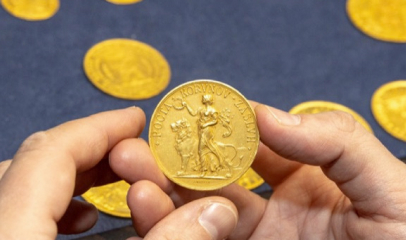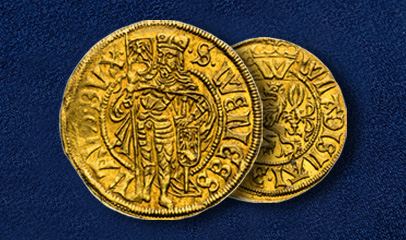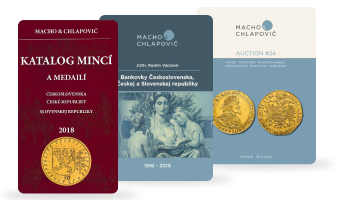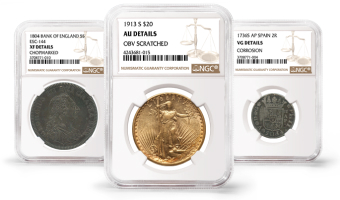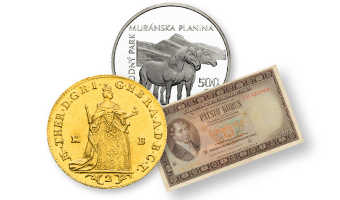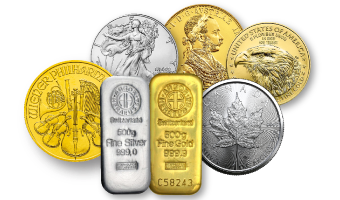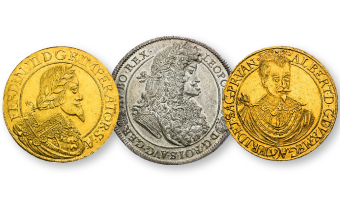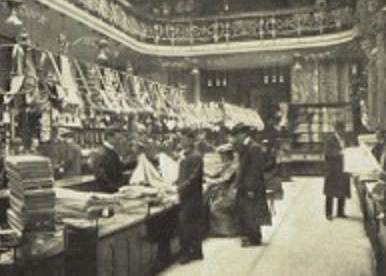
One of the most remarkable collections of bohemian coins was waiting to be discovered
Few years ago, nobody had any idea that in one house in Karlova Street in Prague one of the most remarkable collections of bohemian coins – completely forgotten – is waiting to be discovered. Part of the collection was stored at the bottom of an unused wardrobe in a leather suitcase under a pile of old rags, the other part of the collection in an old desk. Its last owner lived a strange way of life until his death and the collection of old coins meant probably nothing more to him than some ancestral heritage. He neither bought nor sold coins.
The whole story, connected to the old suitcase full of coins, began to come to life only after the death of the owner when the collection was taken over by the Office for Representation of the State in Property Matters. The Office forwarded the collection to the National Museum in Prague, which started its processing and inventorization. Several rare coins from the newly acquired collection found their way to the exhibition Treasures of Numismatic Collections opened at the National Museum last year on July 2nd. After the eligible heirs successfully applied to acquire the collection, the Czech Republic, through the Office, returned the entire set of coins to the new owners. The coins were removed from the ongoing exhibition, but three of them will always remain in the exhibition catalogue of the National Museum – Schlick 2-taler 1520, Budweis half-taler 1574 and Joachimsthal 3-taler 1644.
NOVAK, Prague II., 699 - Numismatic Department
From the labels, storage bags and the collector’s diary it was clear that the collection was founded in the first decades of the 20th century by Josef Novák, a prominent Prague businessman (1892–1936). He inherited from his father a famous and the oldest Prague shopping mall "U Nováků" in Prague’s Vodičkova Street. He developed the inherited enterprise quite successfully and after 1927 the building complex was significantly expanded. A part of the new building was a new concert and theater hall, in which the famous “Liberated Theater of Voskovec and Werich” found refuge in the 1930s. Josef Novák married Libuše from the Bartoň family from Dobenín, with whom he raised three sons. He built the numismatic collection very carefully, which is evident from the preserved collector’s diary. Some of the coins were displayed in a private exhibition. The unexposed part of the collection was stored in bags with the printed inscription J. NOVAK, Prague II., 699 - Numismatic Department.
What was the subject of the collection?
The collection was conceived generously and included coins from all the historical lands of the Czech Crown from 10th to 19th century. However, from the structure of the collection it is clear that Josef Novák paid more attention to some specific periods. This mainly applies to the denar part of collection and taler coins of the 16th and 17th centuries. Among the oldest bohemian coins, a set of several dozen denars with a great flan is interesting at a first glance, including some rare coins by Boleslav II, Dutchess Emma, Soběslav Slavníkovec or Duke Jaromír. Other rare denars are mainly among the mintage of the Moravian subordinate dukes. Many coins have documented origin in large findings of the 19th and early 20th centuries. On the underlying labels we can find references to the findings of Goslin, Olomouc, Byrcz, Rakvice, Kyselovice, Želčany, Chapel of St. Cross, the Kren Gardens etc. Collectors will certainly be interested in the set of counter-marked Prague groschen, among which the groschen with the countermark of Jihlava and the rare counter-marked groschen by Vladislaus Jagiello stand out. However, the real focus of the collection is the early modern period. It encompasses a long series of talers, often in excellent quality, including rare types and dates. Clips and numerous taler multiples are also included. The set of Schlick talers is exceptional. A real rarity is also a complete series of Prague probe copper 1851 kreuzers and their fractions. Photographs of some rare pieces of Novák’s collection are published in Friedensburg’s essential work Schlesiens Münzen und Medaillen der Neueren Zeit published as early as 1901.
Part of the collection was sold out during the life of Josef Novak
Novak’s collector’s diary documents that the collection also contained a large number of gold coins, incl. 2, 5 and 10-ducats. With a few exceptions, they have not been preserved in the collection. From some partial information, it seems that this part of the collection was sold out during the life of Josef Novak. Some pieces were most likely successfully identified in the well-known Winterstein auction of 1936. The sale of the most financially valuable part of the collection was perhaps related to a great personal and family tragedy - at the end of his days Josef Novák suffered from mental illness and was therefore deprived of his civil rights.
After many decades, the auction of Novák’s collection is an opportunity to collectors to enrich their individual collections with exceptional pieces. Not only because of their rarity or price, but also because of a strong collector’s story, that will always be connected with them. In addition, how many of today’s collectors can boast of having acquired coins from an important collection that has been waiting to be discovered and remained untouched by several generations of numismatists?


